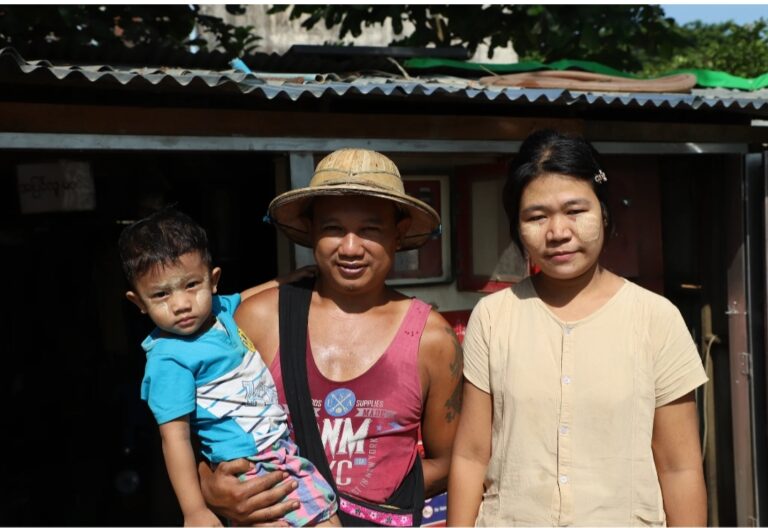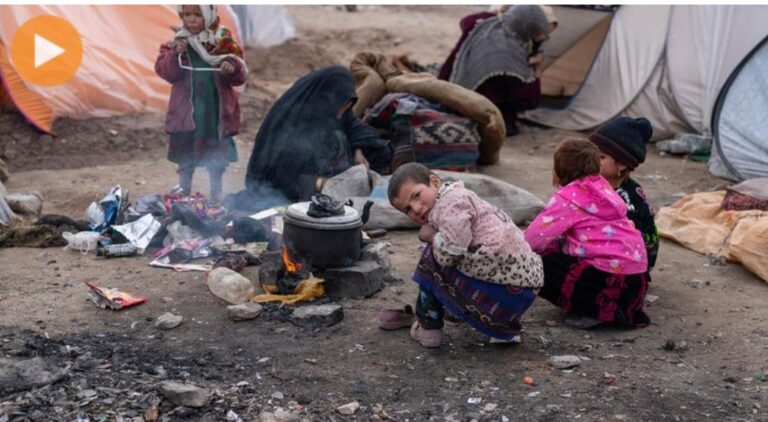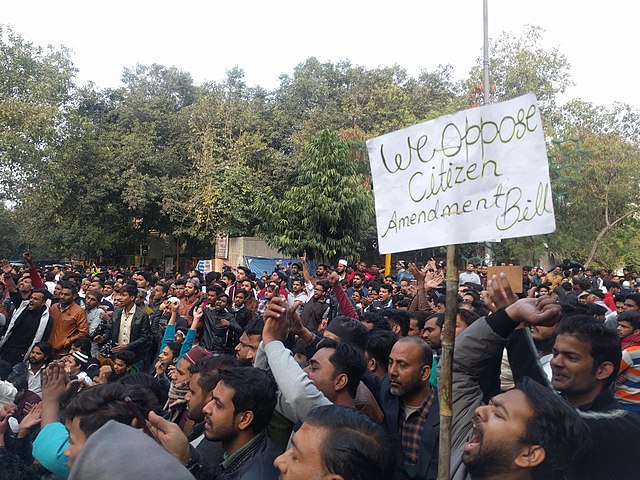Squatters on the outskirts of Myanmar’s capital city, Yangon, juggle their need for food with the fear of eviction. Their existence get yet further complex as they manage their lives under strict curfew-conditions in these times of COVID-19.
By Swe Zin Myo Win
Aung Ko Ko and his wife Ni Ni Lin have faced hard times since COVID-19 struck Myanmar last year. The couple live as squatters in the township of Shwepyithar on the outskirts of Myanmar’s capital, Yangon. Aung Ko Ko runs a small shop selling petrol and other fuel.
“Because of COVID, business is not going so well these days. Before COVID we could make around 20,000 Kyats (USD$12) profit per day,” said the 42-year-old man. “Now we barely make 7,000 or 8,000 Kyats. It is still not enough to feed ourselves, and we are in a debt.”
“For someone my age, it is very hard to find a job during these difficult times. I could probably only find work as a security guard,” Aung Ko Ko says.
To make matters worse the couple heard that the houses of squatters were being demolished in Shwepyithar. This has fuelled fears that they could lose their home.
Over one million people live in the township, many of them families like Aung Ko Ko’s who came to Yangon from other states around Myanmar, looking for opportunities to earn a living in the city.
Shwepyithar was one of six townships in the Yangon region placed under martial law since March 2021, which includes a night-time curfew imposed from 8 PM until 4 AM.
A struggle for a living
At the beginning of the pandemic it was difficult for Aung Ko Ko to go out because of lockdowns and movement restrictions. Some of his family members fell sick making it even more difficult. He and Ni Ni Lin have been supporting their parents financially.
“Our business is struggling terribly and the price of edible oil, rice and almost every commodity has skyrocketed. Everyone in the family and community are in deep financial trouble,” says Ni Ni Lin.
There is little variety in the family’s daily diet these days. It now comprises of white rice with oil and beans.
“It costs around 200,000 Kyats (US $110) monthly to support our family. This includes food and other costs such as medical expenses,” says Aung Ko Ko. The money Aung Ko Ko speaks of is much below the current internationally accepted poverty line of US $1.90 a day for one person.
As critical humanitarian needs rise in many parts of Myanmar, the Myanmar Red Cross Society has stepped in to support families facing great hardships.
In partnership with the United Nations World Food Programme (WFP), Red Cross has been targeting specific townships in areas on the outskirts of Yangon and Mandalay, where the city meets the more rural areas, providing 50 kilogram sacks of rice, which serve as the main monthly food ration for most households.
Between July and September 2021, families received food for just over one million people. In Yangon, more relief was distributed in Dagon Seikkan and Shwepyithar townships in November, providing food for around 740,000 people within the month.
Aye Myint Kyi moved to Yangon after a fire razed her country home
56-year-old Aye Myint Kyi moved to Yangon five years ago having lost all her possessions in a fire which destroyed her home in Pwint Phyu Township in Magway region, central Myanmar.
“We lost our livelihood and home in the fire and so I decided to move to Yangon to support my children’s education and future.”
“Working in the village, we could only make 2000 Kyats (US $1.5) per day which isn’t enough to live on. Here in Yangon, we could earn enough to feed ourselves, but we also have debts. We are just able to make ends meet,” says Aye Myint Kyi.
Aye Myint Kyi’s husband and son remained in their village in Magway. She is financially dependent on her 19-year-old daughter who works in a local garment factory. They live together in a 3-metre square single room.
“We eat and sleep in this one room. The bathroom and toilets are downstairs which we share with other tenants in the building. We mainly eat rice for breakfast, lunch and dinner. We cannot afford any other types food.”
“The rice provided by the Red Cross means so much to us. Between two of us we can make it last for a couple of months,” says Aye Myint Kyi, who is struggling to cover her monthly rent and living expenses.
Many impoverished families living in urban areas of Myanmar are struggling to put food on the table for their families. A large proportion of people work in the informal labour market with no regular income.
Volunteering in the middle of a crisis
COVID-19 has dealt a bitter blow to the livelihoods of millions of people in Myanmar and the state of emergency imposed by the military authorities since February, has caused further hardship.
As the day’s distribution of rice bags gets underway in Shwepyithar, 17 Red Cross volunteers are shepherding the waiting crowd into an orderly queue.
Mindful of COVID-19 restrictions, the volunteers stagger the number of people at the distribution point, ensuring that everyone is physically distanced. Priority is given to the elderly and disabled people.
The volunteers also help to carry the heavy rice sacks and organise carriers for those who need help to get their rice home.
Min Thu, one of the volunteers says, “Some people have to go to work, so they send someone to collect their rice ration on their behalf. We have to manage such situations carefully in case they mistakenly take other people’s rice.”
“Even though the work is tiring, we are just happy that we can be of help to people in dire need”.











